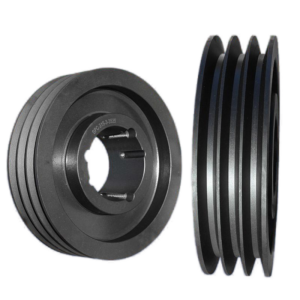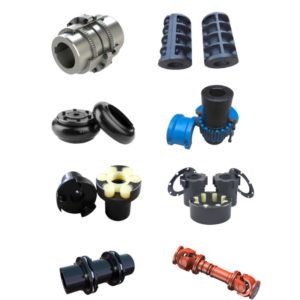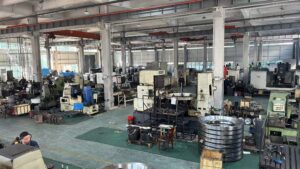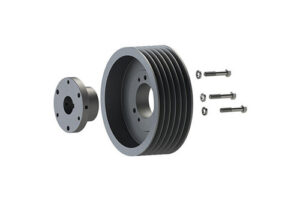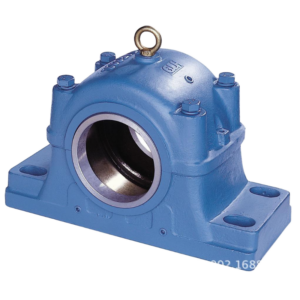When it comes to machinery and power transmission systems, few components are as important as the belt pulley. Whether you’re operating a small industrial machine or a large-scale manufacturing system, understanding how belt pulleys work—and how to choose the right one—can significantly improve your system’s efficiency and longevity. In this complete guide, I’ll cover everything from the basics of belt pulleys to advanced tips on selecting, sizing, and maintaining them. By the end, you’ll be fully equipped to make informed decisions that will keep your machinery running smoothly.
What is a Belt Pulley? Understanding the Basics
A belt pulley is a circular mechanical component used to transmit rotational motion and power between shafts using a belt. The belt moves around the pulley, transferring energy and enabling movement within the system. Pulleys come in various sizes and designs, but the basic principle remains the same: they help in transferring rotational force efficiently.
Belt pulleys are commonly used in a wide range of machinery, from conveyor systems to engines, offering a simple yet effective way to transfer power.
Different Types of Belt Pulleys and Their Applications
There are several types of belt pulleys, each designed for specific applications. The most common types include:
• V-Belt Pulleys: These are designed to work with V-belts, which have a trapezoidal shape. V-belt pulleys are often found in industrial machinery and automotive systems due to their ability to handle high power transmission loads.
• Flat Belt Pulleys: As the name suggests, flat belt pulleys are designed to work with flat belts. These are typically used in systems that require less torque but need to operate over longer distances.
• Timing Belt Pulleys: These pulleys are used with timing belts that have teeth, ensuring a synchronized transfer of motion. They’re commonly used in applications requiring precise timing, such as in automotive engines.
Each type of pulley serves a specific purpose, and the choice will depend on the power transmission requirements of your system.
How to Choose the Right Belt Pulley for Your Machinery
Choosing the right belt pulley for your machinery involves understanding several factors:
• Power Transmission Needs: Consider the amount of power your system needs to transfer. Higher power demands may require pulleys made from stronger materials or larger sizes.
• Speed Requirements: The speed at which the pulley operates will determine the type of pulley needed. Different pulleys are designed to handle varying speeds effectively.
• Environmental Conditions: Take into account the conditions in which your pulley will be used. Will it be exposed to extreme temperatures, moisture, or chemicals? These factors can influence the material choice.
• Pulley Size: Ensure the pulley size matches the specifications of your machinery. If the pulley is too small or too large, it can lead to inefficient power transfer and increased wear and tear.
Common Materials Used in Belt Pulleys and Their Benefits
Belt pulleys are made from a variety of materials, each offering different benefits:
• Cast Iron: Known for its strength and durability, cast iron is a popular choice for heavy-duty applications.
• Steel: Steel pulleys are robust and resistant to wear, making them ideal for high-torque applications.
• Aluminum: Lightweight and corrosion-resistant, aluminum pulleys are often used in applications where weight reduction is important.
• Plastic: For less demanding tasks, plastic pulleys can be a cost-effective and lightweight solution.
Choosing the right material depends on the demands of your application, including load, speed, and environmental exposure.
The Role of Belt Pulleys in Power Transmission Systems
Belt pulleys play a central role in transferring mechanical power within systems. They help link components such as motors, generators, and conveyor systems, ensuring that the rotational motion of the driving source is passed efficiently to the driven parts. Without the proper pulley in place, systems can experience excessive wear, energy loss, and even failure.
How to Maintain and Care for Your Belt Pulley for Longevity
Regular maintenance is crucial for keeping belt pulleys in optimal condition. Here are some tips to extend their lifespan:
• Regular Inspection: Check for signs of wear, cracks, or corrosion regularly. Early detection can prevent more significant problems down the line.
• Proper Alignment: Misaligned pulleys can cause the belt to wear unevenly and reduce efficiency. Ensure proper alignment during installation and maintenance.
• Lubrication: Some pulleys require periodic lubrication to reduce friction and prevent damage. Be sure to follow manufacturer guidelines.
• Cleanliness: Dirt and debris can affect pulley performance. Regularly clean your pulleys to keep them functioning smoothly.
Belt Pulley Sizing: How to Ensure Proper Fit and Performance
Proper pulley sizing is critical for ensuring efficiency and preventing undue stress on the system. The size of the pulley affects the speed ratio between the driving and driven shafts, so it’s essential to calculate the right diameter based on your system’s specifications.
When sizing pulleys, consider the following:
• The diameter of the pulley
• The number of grooves (for V-belt pulleys)
• The center distance between pulleys
Using the correct size ensures optimal power transfer and reduces the risk of belt slippage or excessive wear.
Factors Affecting Belt Pulley Efficiency and Performance
Several factors can affect the performance of a belt pulley:
• Belt Tension: The correct tension is necessary for efficient power transmission. Too tight or too loose can lead to slippage, increased wear, and decreased performance.
• Pulley Groove Design: The design of the grooves in V-belt pulleys can affect how well the belt fits, impacting both power transfer and longevity.
• Belt Material and Condition: Over time, belts can degrade due to heat, friction, or exposure to chemicals. Regularly check and replace worn belts to maintain system efficiency.
Troubleshooting Common Belt Pulley Problems and Solutions
Despite their reliability, belt pulleys can experience issues from time to time. Some common problems include:
• Belt Slippage: This can occur when the belt is too loose, or the pulley is misaligned. Solution: Check the alignment and tension, and adjust accordingly.
• Excessive Wear: Pulleys can wear out due to poor maintenance or incorrect material selection. Solution: Inspect pulleys regularly and replace worn components promptly.
• Noise: Squeaking or grinding noises often indicate that the pulley is misaligned or that the bearings need lubrication. Solution: Inspect and lubricate moving parts as needed.
Why Investing in High-Quality Belt Pulleys is Crucial for Your System
Investing in high-quality belt pulleys pays off in the long run. Quality pulleys ensure:
• Better Efficiency: High-quality materials and precise manufacturing contribute to improved energy efficiency and reliable performance.
• Reduced Downtime: Less frequent breakdowns mean your machinery runs more reliably, reducing downtime and maintenance costs.
• Longevity: Durable pulleys last longer, saving you money on replacements and repairs.
While high-quality pulleys may cost more upfront, their long-term benefits make them a worthwhile investment.
Conclusion
Belt pulleys may seem like simple components, but they play a crucial role in ensuring the efficiency and reliability of power transmission systems. By understanding the basics, choosing the right pulley, and maintaining it properly, you can significantly improve the performance of your machinery. With the tips and information shared in this guide, you’re now better equipped to make informed decisions about belt pulleys that will keep your systems running smoothly for years to come.

